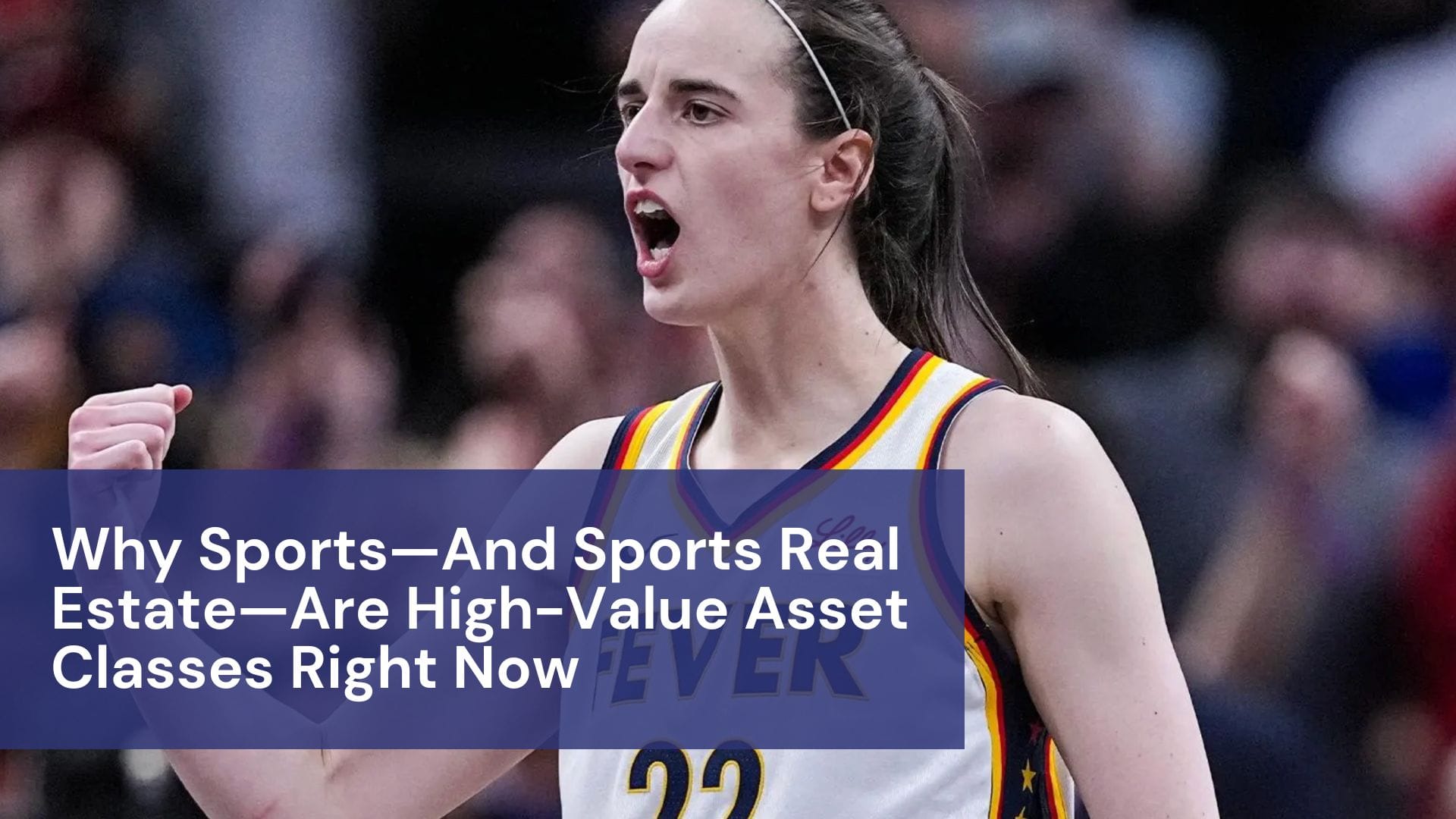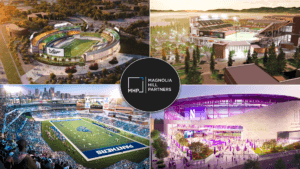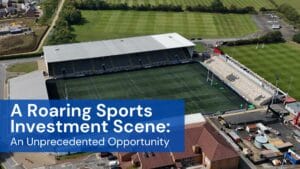Why Sports—And Sports Real Estate—Are High-Value Asset Classes Right Now
by Kyle Israel, Partner at Magnolia Hill Partners
At Magnolia Hill Partners, we’ve long believed in the power of sports to shape culture, drive economic development, and generate lasting value for investors. But what’s happening now—particularly in women’s sports and sports-focused real estate—isn’t just another cycle. It’s a generational investment moment.
The Rise of Women’s Sports Is an Investment Story
Let’s start with the obvious: women’s professional sports are no longer niche. They’re not “emerging”—they’ve arrived. According to Rise of Sports Districts, in 2025, the global women’s pro sports market is projected to hit $2.35 billion, up 25% from last year. That’s not just growth—it’s acceleration.
And the numbers speak volumes. In 2024 alone, WNBA attendance hit 2.4 million—up nearly 50% year-over-year—and more than 54 million viewers tuned into national broadcasts. Franchises that once traded hands for single-digit millions are now commanding 9-figure valuations. The New York Liberty just sold a minority stake at a $450 million valuation. The average WNBA team is now valued at $272 million, and the Connecticut Sun—one of the league’s smaller-market teams—is expected to fetch close to $250 million.
What’s driving this surge? It’s a potent mix of rising media rights deals, booming fan engagement, and generational talent like Caitlin Clark and Angel Reese capturing attention far beyond the sports world. But underneath all that momentum is a deeper story of untapped infrastructure and opportunity.
Sports Real Estate: The Next Frontier
We’re seeing a wave of investment not just in the teams, but in the infrastructure that surrounds them. Across the WNBA, teams like the Las Vegas Aces, Seattle Storm, and Indiana Fever are opening state-of-the-art training facilities. But the biggest moves are happening in real estate.
Take the Kansas City Current—a club that’s rapidly becoming the blueprint for what’s possible. In 2024, they opened the first stadium purpose-built for a women’s professional team. The $117M private investment was followed by a 10-year naming rights deal, a 200% jump in revenue, and the announcement of a transformative $800M sports and mixed-use district (SMD) along the KC waterfront.
These aren’t one-off stories—they’re proof points. Sports-anchored districts are driving local revitalization and creating new ways for fans to engage with teams. And while there are 37 SMDs in the pipeline across men’s sports, women’s sports remain relatively untapped—making them a true first-mover opportunity.
Betting on Scarcity, Scarcity Betting on Growth
What makes sports—and sports real estate—so compelling as an asset class right now? Scarcity and growth.
There are only so many professional teams. There’s only so much land near those venues. And there are only so many chances to get in early on a league that’s hitting its economic stride.
In the WNBA, demand from potential owners far exceeds the supply of available franchises. Meanwhile, women’s teams are still early in their revenue curve—unlike many men’s teams that face maturing revenue streams and plateauing growth. This positions women’s sports assets as asymmetric upside plays: modest current income, but high terminal value.
At Magnolia Hill Partners, we’re not just investors—we’re builders. We believe the next wave of sports investing will be defined by how effectively you combine capital with culture, and place with purpose. The future of women’s sports—and the real estate that supports it—isn’t a long shot. It’s a high-percentage play.
Now is the time.





